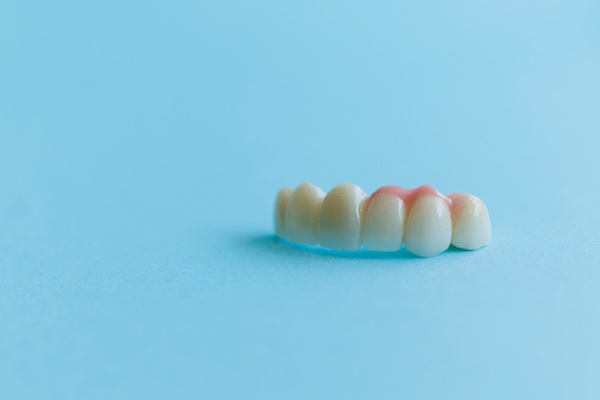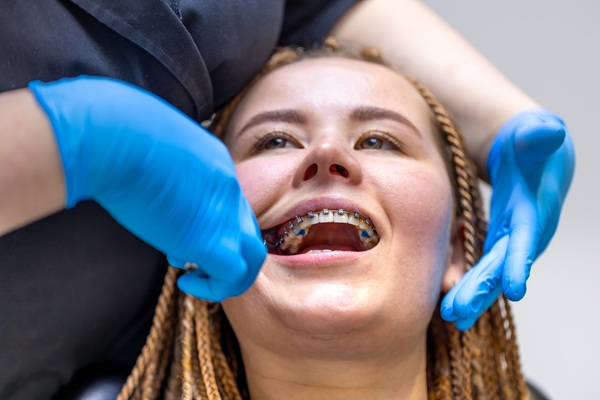Replacing missing teeth has become more attainable with the help of dental bridges because they work by literally “bridging” the gap left by one or more missing teeth, which helps restore your smile and improve your oral health.
However, like other dental appliances, people also face challenges when dealing with their dental bridges.
Aside from the benefits you can get from them, it is also important for us to help let you know about the dental bridge problems and symptoms that some patients encounter. Knowing what to expect and recognising these problems early can help you address issues before they worsen.
Let’s take a look at how to manage or prevent them.
Symptoms That May Indicate You Have Dental Bridge Problems
If you recently got your dental bridges, congratulations to you for taking the first step to having healthy teeth! Since you already have them done, it may be possible to experience some unusual events after your treatment, and being aware of dental bridge problem symptoms can help you take prompt action if issues arise.
Here are some symptoms you should look out for:
- Persistent discomfort or pain around the bridge.
- Red, swollen, or bleeding gums.
- Bad breath or an unpleasant taste that doesn’t go away.
- Visible damage or changes in the bridge’s appearance.
- A feeling that the bridge is loose or unstable.
If you experience any of the following, consult your dentist right away.
Common Dental Bridge Problems
1. Poor Fit or Discomfort
A dental bridge must fit perfectly to your teeth to function properly. If it’s too loose or does not align correctly with your bite, you may experience discomfort or difficulty chewing.
Symptoms of Poor Fit:
- Persistent discomfort or pain in the area of the bridge.
- Difficulty biting or chewing food.
- Feeling that the bridge is loose or unstable.
Solution:
If your dental bridge feels uncomfortable or doesn’t fit well, it’s essential to contact your dentist immediately. Adjustments or a replacement bridge may be necessary to ensure a proper fit.
2. Tooth Decay or Damage to Abutment Teeth
Traditional bridges typically rely on adjacent natural teeth for support. The adjacent teeth are called the abutment teeth. If these teeth become decayed or damaged, the entire bridge’s stability can be compromised.
Symptoms of Decay or Damage:
- Increased sensitivity to hot or cold temperatures.
- Pain or discomfort around the abutment teeth.
- Visible damage or decay on the supporting teeth.
Solution:
Make sure to maintain excellent oral hygiene to protect your dental bridge and abutment teeth. Regular dental check-ups can help catch early signs of decay or damage, allowing for timely treatment.
3. Gum Problems Around the Bridge
Gum health plays a vital role in the success of a dental bridge. Issues like inflammation, infection, or recession can lead to discomfort and compromise the bridge’s stability.
Symptoms of Gum Problems:
- Red, swollen, or bleeding gums near the bridge.
- Persistent bad breath or a bad taste in the mouth.
- Receding gums exposing the base of the bridge.
Solution:
Good oral hygiene, including regular brushing and flossing, is the number one solution to prevent gum problems. Your dentist may also recommend professional cleanings or gum treatments if needed.
4. Bridge Fracture or Damage
Although dental bridges are designed to be durable, they are not indestructible. Excessive force or wear and tear over time can cause cracks, chips, or other damage to your dental bridge.
Symptoms of Bridge Damage:
- Visible cracks or chips in the bridge.
- Feeling of roughness or sharp edges on the bridge.
- Reduced functionality, such as difficulty chewing.
Solution:
Avoid habits like chewing on ice or hard objects to minimise the risk of damage. Night grinding may also be the cause of why your bridge can get damaged. If you suspect that your bridge is damaged, see your dentist promptly for repair or replacement.
5. Food Trapping and Hygiene Challenges
The structure of a dental bridge can create spaces where food particles and plaque can become trapped. This can lead to oral hygiene challenges and increase the risk of decay or gum problems.
Symptoms of Poor Hygiene:
- Bad breath or an unpleasant taste in the mouth.
- Visible plaque or food particles near the bridge.
- Increased risk of gum inflammation or decay.
Solution:
Use specialised dental tools, such as interdental brushes or floss threaders, to clean around and under the bridge. Regular professional cleanings can also help maintain oral health.
6. Allergic Reactions to Bridge Materials
In rare cases, some individuals may experience an allergic reaction to the materials used in their dental bridge, such as metals.
Symptoms of Allergic Reactions:
- Persistent irritation or discomfort in the mouth.
- Swelling or redness in the gums or surrounding tissue.
- A metallic taste in the mouth.
Solution:
If you suspect an allergic reaction, consult your dentist immediately. They can recommend alternative materials, such as porcelain or zirconia, which are less likely to cause allergies.
7. Bridge Loosening or Falling Out
Over time, the cement or adhesive holding your dental bridge in place may weaken, leading to loosening or detachment.
Symptoms of a Loose Bridge:
- Feeling that the bridge is shifting or moving.
- Discomfort or difficulty when biting or chewing.
- The bridge falling out entirely.
Solution:
If your dental bridge becomes loose or falls out, avoid using it and contact your dentist immediately. Recementing or replacing the bridge may be the necessary option for your case.
Preventing Dental Bridge Problems
Some dental bridge problems may be unavoidable, but many of them can be prevented when you include proper care and maintenance in your routine.
Here are some tips to keep your dental bridge in top condition:
- Practice Good Oral Hygiene: Brush twice daily and floss carefully around the bridge using floss threaders or interdental brushes.
- Visit Your Dentist Regularly: Regular check-ups allow your dentist to monitor your bridge and may address any issues early.
- Avoid Hard or Sticky Foods: Chewing on hard objects or sticky foods can damage your bridge or dislodge it.
- Wear a Mouthguard if Needed: If you grind your teeth, a custom mouthguard can protect your bridge from excessive wear.
- Choose Quality Materials: Investing in a well-made bridge with durable materials can minimise long-term problems.
Caring for Your Smile with Confidence
Dental bridges may help restore your smile and improve your oral health, but like any dental restoration, they also require the necessary care and attention from you. Learning about the common dental bridge problems and their symptoms can help you become more proactive in taking steps to prevent issues and ensure your bridge lasts for years to come.
If you’re looking to restore your teeth or thinking of getting dental bridges, our dentists at Bellevue Hill Dental are happy to help and guide you towards your goal. Our caring and experienced team is ready to assist and teach you more about dental bridges.
Book an appointment online or call us at (02) 9389 4748 to keep your smile healthy and beautiful for years to come.



